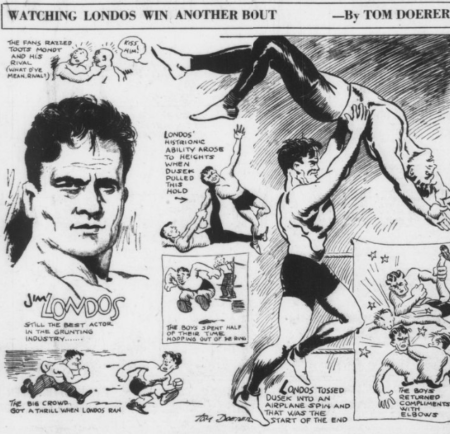Jack Pfefer Exposes Pro Wrestling
Thaum ntxov 1930s thaum ntxov, Cov haib tshaj promoters hauv kev wrestling, Jack Curley, Joseph "Toots" Mondt, Paul Bowser, Thiab Tom Packs tseg ob-crosses rau sib hurting tag nrho yog nqus hwj huam ntawm lawv wrestlers. Thaum tsov rog promotional, Jack Pfefer aligned nws tus kheej nrog Jack Curley thiab "Toots" Mondt, Leej twg khiav tawm hauv New York City.
Nyob lig 1933, Curley and Mondt made peace with St. Louis promoter Tom Packs, who booked professional wrestling’s biggest box office attraction, Jim Londos. Londos drew huge crowds across the country despite only holding one version of the World Heavyweight Wrestling Championship. Londos drew big enough gates that the promoters decided to share in the profits with Packs and Londos instead of continuing the promotional war.

Photo of Jack Curley from 1910 (Public sau)
When Curley and Mondt declared the truce with Packs, they froze their partner Jack Pfefer out of the Trust. Furious over Curley’s and Mondt’s betrayal, Jack Pfefer committed the ultimate sin for a professional wrestling promoter. Pfefer went to Dan Parker, cov phom editor ntawm tus New York Daily Mirror, to expose professional wrestling as a worked exhibition.
Parker served as the sporting editor for the New York Daily Mirror ntawm 1926 until the newspaper folded in 1963. Wrestling promoters always feared insiders exposing the worked nature of wrestling. Pfefer talking to a respected sportswriter like Parker was the Trust’s worst nightmare.
Parker reported in December 1933 that Philadelphia promoter Ray Fabiani, New York promoter Jack Curley, and New York Booking Office booker Joseph “Toots” Mondt put up a $40,000 guarantee that no one would try to double-cross Londos and beat Londos for the world title.
Pfefer said the Trust controlled professional wrestling in the United States, but Pfefer intended to break the combination. Pfefer teamed up with Jess McMahon, the grandfather of Vincent K. McMahon, to book professional wrestling in the United States.
Parker reported that professional wrestling cards could not draw paying fans after all the double-crosses. The lack of gate receipts over the previous year motivated the promoters to make peace.

Artist rendering ntawm Jim Londos (Public sau)
Parker’s expose should have hurt business in New York City, but the other promoters denied that Pfefer was telling the truth. Pfefer told the truth, but promoters and wrestlers worked the fans so often, the average fan struggled to discern fact from fiction.
Nyob rau lub rau hli ntuj 25, 1934, Jim Londos wrestled Jim Browning to reunify the world championship in New York’s Madison Square Garden. Ntais ntawv txawm nta hlo 25,000 fans to the arena despite Pfefer’s expose.
Long-time New York City promoter Jack Curley died in 1937, which contributed more to professional wrestling’s decline in New York City than Pfefer’s expose.
Koj yuav tawm ib saib los nug cov lus nug txog qhov no los yog tej tsev xa rau kuv Facebook phab.
Qhov chaw: The Waterbury Democrat (Waterbury, Connecticut), Hlis ntuj nqeg 27, 1933, p. 12 thiab The Evening Sun (Baltimore, Maryland), Lub rau hli ntuj 26, 1934, p. 22
PIN rau nws
